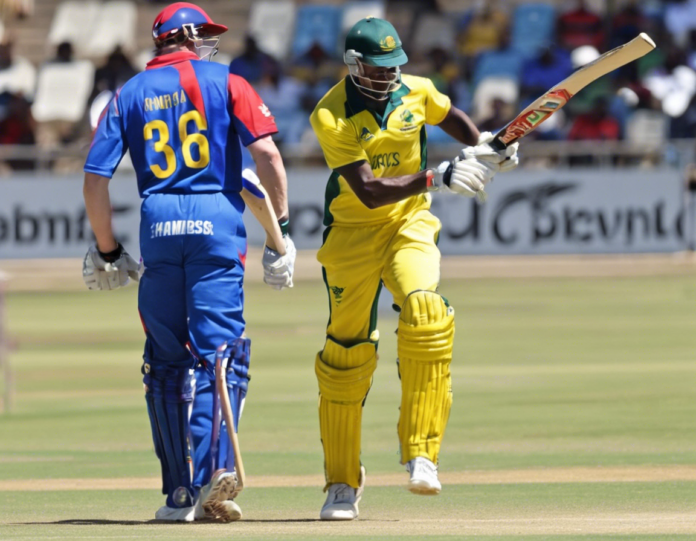As cricket fans, we often find ourselves engrossed in analyzing match scorecards, particularly when two competitive teams face off. Today, let’s delve into a fascinating comparison between Namibia and Australia based on their match scorecards. Analyzing these statistics can provide valuable insights into the performance of both teams, highlighting key strengths and areas for improvement.
Match Overview
The match scorecard serves as a detailed record of a cricket match, capturing essential information such as runs scored, wickets taken, strike rates, partnerships, and individual player performances. It provides a comprehensive overview of the game, allowing fans and analysts to assess the performance of each team and player.
Key Metrics to Consider
When analyzing a match scorecard, several key metrics stand out as crucial indicators of team and player performance. Some of the most important factors to consider include:
-
Total Runs Scored: The total runs scored by each team provide a clear indication of their batting performance. A high score suggests strong batting capabilities, while a low score may indicate struggles with the bat.
-
Wickets Taken: The number of wickets taken by a team reflects their bowling efficiency. Taking quick wickets can put pressure on the opposition and tilt the game in favor of the bowling side.
-
Batting Strike Rate: The batting strike rate measures how quickly a batsman scores runs. A high strike rate suggests aggressive batting, while a lower rate may indicate a more cautious approach.
-
Bowling Economy Rate: The bowling economy rate indicates how many runs a bowler concedes per over. A lower economy rate is generally more favorable, as it implies tighter bowling and pressure on the batting team.
Namibia vs. Australia: A Comparative Analysis
Let’s now compare the match scorecards of a hypothetical game between Namibia and Australia to illustrate how these metrics can provide valuable insights into team performance.
Namibia Scorecard
- Total Runs Scored: 230
- Wickets Taken: 8
- Batting Strike Rate: 110
- Bowling Economy Rate: 5.2
Australia Scorecard
- Total Runs Scored: 270
- Wickets Taken: 7
- Batting Strike Rate: 125
- Bowling Economy Rate: 4.8
In this hypothetical match, Australia outperformed Namibia in both total runs scored and batting strike rate. They managed to score 40 runs more than Namibia and at a faster pace, indicating a more aggressive batting approach. However, Namibia showed resilience in taking wickets, capturing 8 wickets compared to Australia’s 7.
From a bowling perspective, Australia had a slightly better economy rate, conceding 4.8 runs per over compared to Namibia’s 5.2. This suggests that Australia’s bowlers were more economical and disciplined in their approach.
Player Performances
Analyzing individual player performances is also essential when dissecting a match scorecard. Key players who contribute significantly to their team’s success can often tip the scales in favor of their side. Looking at metrics such as runs scored, wickets taken, strike rates, and economy rates for each player can provide a deeper understanding of their impact on the game.
Frequently Asked Questions (FAQs)
1. What is the significance of analyzing match scorecards in cricket?
Analyzing match scorecards helps assess team and player performances, identify strengths and weaknesses, and gain insights into game dynamics.
2. How do total runs scored impact a team’s performance?
The total runs scored reflect the batting prowess of a team. Higher scores indicate strong batting performances, while lower scores may reveal underlying issues in the batting lineup.
3. Why is the bowling economy rate important for bowlers?
The bowling economy rate measures a bowler’s ability to control the flow of runs. A lower economy rate suggests effective bowling and can put pressure on the opposition.
4. What role does the batting strike rate play in cricket analysis?
The batting strike rate indicates how quickly a batsman scores runs. A high strike rate implies aggressive batting, while a lower rate may suggest a more cautious approach.
5. How can individual player performances influence match outcomes?
Key players who excel in batting, bowling, or fielding can significantly impact match outcomes. Their contributions often determine the success of their team.
In conclusion, analyzing match scorecards in cricket offers a wealth of insights into team and player performances, strategic approaches, and game dynamics. By considering key metrics and individual player performances, fans and analysts can gain a deeper appreciation for the nuances of the game and the factors that influence outcomes on the field.



